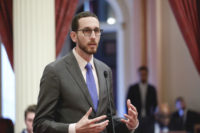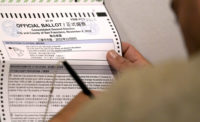Conservationists are celebrating a new law in California that expands the state’s building energy-use benchmarking program to include multifamily housing and facilitates the implementation of the state’s log-jammed commercialbuilding benchmarking program. The law, which will give owners of buildings larger than 50,000 sq ft easier access to wholebuilding electric utility data, makes California the first U.S. state to have such a comprehensive benchmarking program.
“We are celebrating,” says Maria Stamas, a lawyer with the Natural Resources Defense Council. NRDC, with the California Energy Commission (CEC), led a coalition that supported Assembly Bill No. 802 (AB 802), sponsored by Assembly Member Das Williams and signed into law on Oct. 8 by Gov. Jerry Brown (D).
AB 802 requires each utility, upon request of an authorized owner or its agents, to deliver or provide aggregated energy-use data. AB 802, which also requires owners to report aggregated energy use to the state, is important because “we are enabling the marketplace for building upgrades,” says Andrew McAllister, a CEC commissioner.
Access to whole-building data will enable owners to make “smart” energy-retrofit investments and reduce owners’ and tenants’ energy bills, adds Stamas.
According to the Institute for Market Transformation (IMT), 14 U.S. cities, one county and Washington state and California have rules for reporting energy use.
The long-term goal of laws for benchmarking, which is the process of measuring energy use over time, is to encourage a decrease in energy consumption. Last year, 41% of total U.S. energy consumption— or about 40 quadrillion Btu—was consumed in residential and commercial buildings, according to the U.S. Energy Information Agency. Owners that track energy use save an average of 2.4% annually on energy bills, according to the U.S. Environmental Protection Agency.
Compare Energy Use
Energy benchmarking laws allow owners to compare building energy performance relative to similar buildings. Governments can use the data to allocate funds more effectively or create incentives to cut consumption, says IMT.
California has had a commercial building benchmarking program since 2007, but the program was not implemented in large part because of the inability of owners with multiple tenants to receive whole-building energy use information from their utilities.
The requirement to share a benchmarking rating only for buildings changing hands, in the form of an EPA Energy Star score, also was viewed as less than optimal, says Stamas.
CEC is tasked with implementing AB 802, which goes into effect on Jan. 1, 2017. Next month, CEC will start the process of defining AB 802’s program. Reporting will be standardized around EPA’s online, interactive building owners’ energy-use tracking tool, the Energy Star Portfolio Manager, says McAllister. CEC will ensure that state and city benchmarking programs in California align, he adds.
McAllister expects to have CEC’s benchmarking rules set by the spring. “Our goal is to make benchmarking and compliance as simple and low cost as possible for building owners,” he says.




Post a comment to this article
Report Abusive Comment